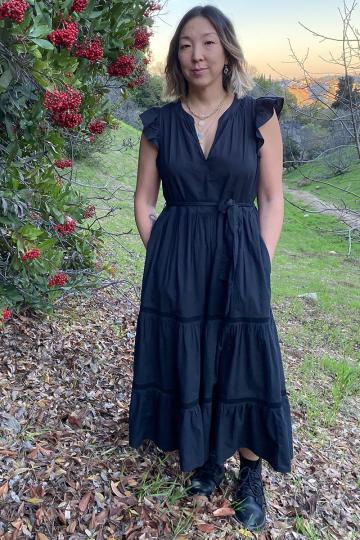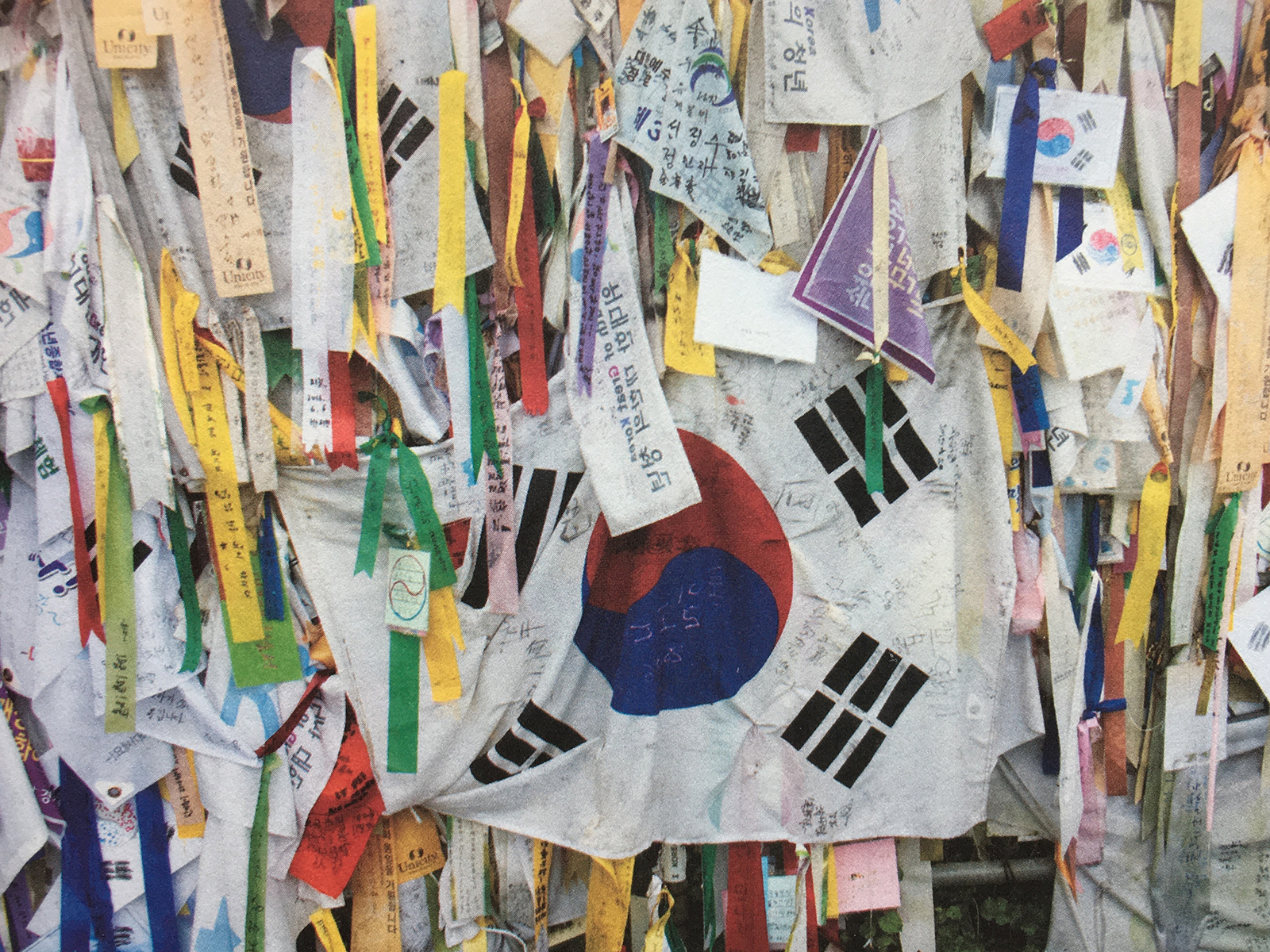Time Out Grant Winner Explores the Legacy of Korea’s Division in New Book
“Longitude” is a measurement used to pinpoint a location—a line running north to south on a map. But what happens when one of those lines is arbitrarily severed, forever dividing a country and its people? That’s when the word can also signify a state of longing—one that Koreans and Korean Americans know all too well, says Katherine Yungmee Kim ’93.
Both meanings are intertwined in Kim’s recently published limited-edition art book, Longitude (Datz Press, 2021), an award-winning project that received crucial seed funding from Vassar’s Time Out Grant. Available only to Vassar alums age 40 or older, the grant funds a year off to pursue “a dream that encompass[es] their own lives and the lives of others.”
Photo: Dahlia Simone Kim Levy
Kim used her 2013 Time Out Grant to travel to Korea’s Demilitarized Zone (DMZ)—the massively guarded 2½-mile-wide buffer area along the 38th parallel that has divided the Korean peninsula into two opposing nations since 1953. That division has left Koreans who lived through it, as well as their descendants, yearning for unreachable relatives and homelands to this day.
“The book is a history of the DMZ, and it is a history of my family’s land on the DMZ and the legacy of the national division upon the diaspora of Korean families that were separated,” Kim explains. “I tried to tap into that sense that every Korean knows—this sense of longing and pining for, and what that means within my own family.”
I peered in coin-operated binoculars but for what, and for whom? The missing and the dead, the ghosts and the wraiths, the enemy soldiers and my mother’s mother’s mother.
—From Longitude by Katherine Yungmee Kim
Both of Kim’s grandmothers were from what is now North Korea, and Kim’s family once owned land that now lies along the southern side of the DMZ. “I would hear about this land along the DMZ that was irretrievable, and I just wanted to find it,” she says. “I wanted to stand there and see the vista and understand a little bit of what my maternal forebears experienced.”
Kim was in fact able to find the land, to see the graves of her great-grandparents buried there—
even to present a stone she had collected there to her 100-year-old maternal grandmother back in Queens, NY. But all this was only part of an extraordinary journey that took eight years to complete and involved two trips to Korea. The second was funded by a Dorothea Lange-Paul Taylor Prize from Duke University’s Center for Documentary Studies, which Kim won in 2017.
While it is actually not that unusual for a civilian to visit the DMZ—it is a popular tourist attraction complete with photo ops with guards—Kim was able to find people willing to take her to areas not normally accessible. For example, through a tour guide she had gotten to know, she met a farmer who “took me to his farm in the DMZ, which he wasn’t supposed to do, but he said I was his niece and I was able actually to get into the militarized border with him,” she recounts.
What she found was full of contradictions: Guarded and dangerous, yet beautiful and undisturbed. “A marvel and sanctuary of accidental and unkempt purity,” is how Kim describes it in Longitude.
“Because it’s been untouched by human hands for so long, a lot of species have proliferated there,” she notes. “It’s a pristine area yet heavily militarized—possibly the most heavily militarized border in the world. There are two million troops on either side and a million land mines.” In that kind of environment, Kim observes, mayhem could ensue at any moment. “I was worried about the random act of violence,” she allows.
Longitude doesn’t have a single narrator; it speaks with multiple voices that include members of Kim’s family and the soldiers, schoolteachers, ecologists and elders whom she interviewed in South Korea and the United States. Pictures carry an equal share of the storytelling and include those she took at the DMZ, archival news photos, family snapshots, and even an image of happy children from a North Korean propaganda leaflet.
“I often don’t write in a very linear form,” says Kim, who earned an MFA in creative writing from Columbia University and is now Program Director of the Koreatown Storytelling Program at the Koreatown Youth and Community Center in Los Angeles. “Even when I write fiction, it tends to move around in time and voice.” Kim has long been “drawn to real stories. I find that lived experience is more interesting to me than what I can conjure in my own mind,” she says. Her current project deals with oral histories of Los Angeles’s Koreatown, featuring the “underrepresented, marginalized voices of the immigrant community. The idea is to get narratives of their life experiences,” she notes. “It’s an ethnography of the community.”
Kim was recently awarded an NEA grant for the project. And she believes that her success in securing grants for her work over the years can be traced back to the Time Out Grant. “It enabled me to understand how to write a grant and what the process of getting a grant is,” she says. “Because of that track record, it snowballed—and it was a beautiful snowball.”
Longitude is available for purchase on Kim’s website, and from Datz Press.

